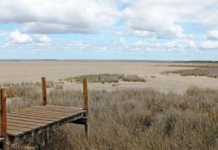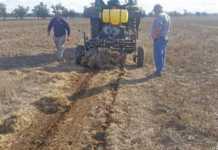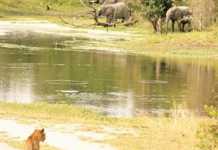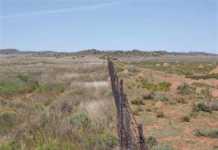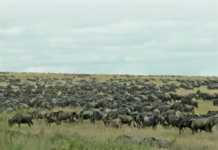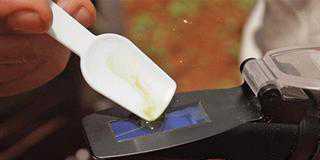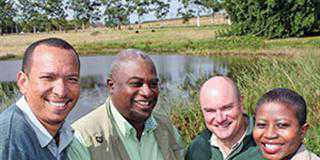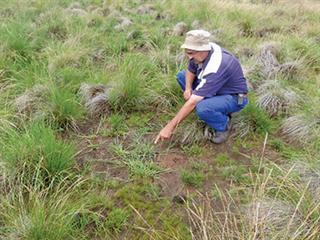
The Karoo is a lovely place to be when it rains. In February, I saw rainbows each day for a week and experienced the sweet aroma of wet earth and rich vegetation. Everyone I met was euphoric. Moreover, I was exposed to a number of colourful ways of solving grazing problems that can contribute to returning desert to productive grassland. I am not going to go into detail. I merely want to share some of the thought-provoking ideas I encountered.
During last year’s drought, buying forage to keep animals alive drained potential profits. But hard times also stimulate innovation that can be of lasting value. A good example is turning totally unpalatable grass into good forage. Bun Davenport, who farms on a large cattle and sheep farm in the Steynsburg area, was hard-pressed to find food for his livestock. Then a neighbour told him how, while touring France, he had seen a farmer spraying caustic soda onto wheat straw and how this had made the straw far more palatable.
Bun immediately thought of the massive amount of suurpol (Merxmuellera disticha) he had on his farm – a grass that neither cattle nor sheep will eat when it is mature. After researching the subject, he decided to conduct a trial. Using high-pressure fire-fighting equipment, he thoroughly soaked about 25m² with a 2,5% solution of caustic soda. The results were remarkable. The cattle and sheep were moved into the camp a day later and consumed about 60% of the sprayed tufts. (Bun also supplied a good protein lick). Soft dung indicated the forage was highly digestible, and the animals returned to eat the regrowth!
There is another benefit – palatable grasses have made their appearance in between the grazed tufts of suurpol. Bun believes that suurpol does not like competition from other grasses and foresees that the ‘caustic soda solution’ could result in improved veld. One thing is certain, though. Bun knows he has more than enough forage on his farm should another drought occur!
Hopefully this forage will be replaced in the future by superior grasses able to provide good grazing in drought without using caustic soda. However, this is not a practice I would recommend at this stage, because caustic soda is an extremely hazardous chemical. But I do see it as (quite literally) fertile ground for further research. More than 30 years ago, on his farm in the Hofmeyr district, Willoughby Lord had already demonstrated that climax grassland can be reinstated in the Karoo. A few weeks ago, I asked him to give a talk to a group of Karoo farmers near Middelburg.
Now 87, he drove from Cradock to the meeting and told how he had worked his ‘miracle’. He recounted how he had bought adjoining veld heavily infested with an inedible weed. As removing the weeds by hand would have been too expensive,
he decided on the innovative plan to graze this camp only in the winter. After approximately 10 years, the improvement was so marked that it was noticed by a passing rangeland scientist from Grootfontein Agricultural College.
The scientist conducted a comprehensive survey and found it to be climax veld – the best he had ever seen in that region! I believe the practice of full summer rest followed by winter grazing has a far wider application than just in the Karoo. Think of the many areas where low-cost, legume-based summer pastures can be grown to improve the veld by allowing a full summer’s rest.
Just remember: the winter stocking density must allow for utilisation of palatable species only. Leave the undesirable species ungrazed and unburnt. This will see them become moribund, allowing desirable species to dominate.
John Fair heads up Fair’s Biofarm Assist. Phone him on 058 622 3585 or [email protected].

